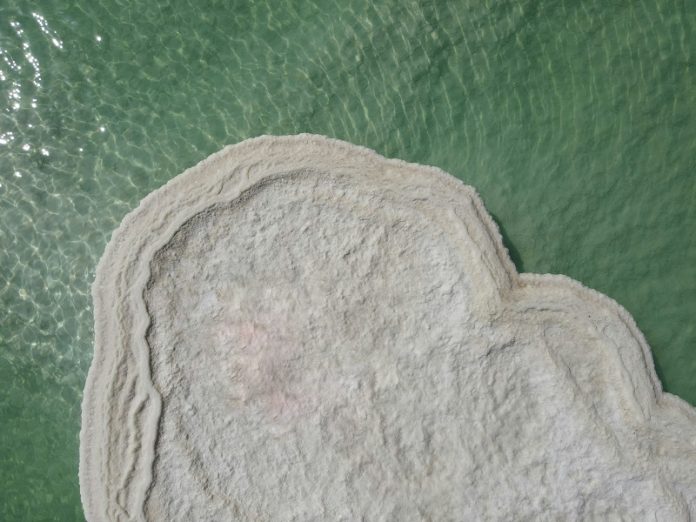
The Dead Sea is one of the most unusual places on Earth.
Located at the lowest point on the planet’s surface and known for its extreme saltiness, this deep, salty lake is now offering scientists new clues about how massive underground salt formations—called “salt giants”—form over time.
A recent study led by Professor Eckart Meiburg from the University of California, Santa Barbara, explores the processes behind these giant salt deposits.
These salt layers can stretch for kilometers and reach over a kilometer thick, and while we can find them hidden deep beneath places like the Mediterranean and Red Seas, the Dead Sea is one of the only places where we can actually watch them form today.
What makes the Dead Sea such a special laboratory is its unique combination of factors: it’s a saltwater terminal lake, meaning it has no outflow, so water leaves only through evaporation. As water evaporates, salt is left behind.
Over thousands of years, this process has created thick layers of salt. More recently, human activities—like the damming of the Jordan River that feeds into the lake—have sped up the process.
The lake’s water level is now dropping by about a meter (three feet) every year, exposing more salt and changing the lake’s structure.
Another key factor is temperature. The Dead Sea used to be “meromictic,” meaning it stayed layered all year round, with warmer, less salty water on top and colder, saltier water below. This layering helped keep salt from mixing evenly throughout the lake.
But in the 1980s, the reduced inflow of fresh water caused the surface salinity to rise. This allowed the layers to mix, turning the Dead Sea into a “holomictic” lake that mixes at least once a year.
Despite this mixing, the lake still becomes layered again during the warmer months, and it’s during these periods that fascinating things happen. In 2019, Meiburg’s team discovered that salt crystals, known as halite or rock salt, were falling through the water column—like underwater “salt snow.”
This was surprising, since salt usually crystallizes more in colder conditions. But because summer evaporation increases surface salinity, and the warm top layer holds more dissolved salt, a special condition called “double diffusion” occurs.
Warm, salty water cools and sinks, while cooler water rises and warms. As the upper layer cools down, the excess salt starts to form crystals and fall to the bottom.
This ongoing salt snowfall—combined with seasonal temperature changes, evaporation, and lake currents—explains how massive salt layers slowly form. It’s a rare chance for scientists to study these geological giants in action.
Similar conditions millions of years ago in the Mediterranean Sea led to one of the thickest salt deposits in the world, when the sea dried up during the Messinian Salinity Crisis. Later, when the Strait of Gibraltar reopened, the Mediterranean refilled, but the thick salt layers remained buried deep below.
The Dead Sea’s underwater springs and shifting salt levels also help form strange features like salt chimneys and domes.
By studying these processes, researchers hope to better understand not only ancient geology, but also modern challenges like coastal erosion in dry regions and the potential for sustainable salt extraction.
In short, the Dead Sea continues to surprise scientists with its quiet, slow-motion formation of salt giants—offering a window into Earth’s past and a better understanding of its future.



